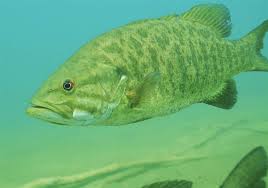From the Blog of Betsy J. Lawson, Monongalia County, WV, May 31, 2019
Dunkard Creek wanders above and below the Pennsylvania-West Virginia state line for much of its forty-three miles, seeming to taunt the rigidity of man-made boundaries. It was one of the most ecologically diverse streams in either state. But in August of 2009, people who lived along the stream witnessed an unimaginable sight: thousands of fish were trying to leap out of the water.
During the next month, about 22,000 fish washed ashore, many bleeding from the gills and covered in mucous. Some estimates say as many as 65,000 died. Three-foot long muskies washed up along the riverbanks. The die-off marked one of the worst ecological disasters in the region’s history. Some 161 species of fish, mussels, salamanders, crayfish and aquatic insects were wiped out.
Department of Natural Resources officials from both states arrived at the crime scene to find answers. Golden algae bloom was the cause. The algae releases a toxin that ruptures the tissue cells in the mouths and gills of fish, depriving them of oxygen and suffocating them. Algae bloom only lives in very salty waters.
The DNR found that Consol Energy had been discharging acid mine drainage directly into Dunkard Creek for decades. In the spring of 2010, one of Consol’s primary contractors, Allan’s Waste Water Service, a wastewater hauling company, was charged with multiple counts of illegally dumping toxic waste, including Marcellus Shale-produced wastewater into Dunkard Creek and its tributaries. Wastewater from fracking is ten to twenty times more saline than sea water.
In more recent years, hydraulic fracturing wells had been removing huge quantities of fresh water from the stream and dumping the wastewater back into the stream. Low water levels, high salt content from fracking wastewater, and especially high sulfate levels, typical of AMD, led to the algae bloom. Such a bloom had never been seen north of Texas and Florida before. How did the golden algae get to the temperate freshwater of West Virginia and Pennsylvania?
Read a more detailed explanation of the fish kill HERE.
#######+++++++#######+++++++#######
See Also: A Case Study of a Prymnesium parvum Harmful Algae Bloom in the Ohio River Drainage: Impact, Recovery and Potential for Future Invasions/Range Expansion, November 15, 2021
Authors are Kyle J. Hartman, David I. Wellman, Jr., Joseph W. Kingsbury, Daniel A. Cincotta, Janet L. Clayton, Kevin M. Eliason, Frank A. Jernejcic, Nathaniel V. Owens, and Dustin M. Smith ~ School of Natural Resources, West Virginia University & Wildlife Resources Section, West Virginia Division of Natural Resources
Water 2021, 13(22), 3233; https://doi.org/10.3390/w13223233
Received: 24 August 2021 / Revised: 9 October 2021 / Accepted: 2 November 2021 / Published: 15 November 2021. (This article belongs to the Special Issue: “The Blue Economy: Evaluating the Human Benefits from and Pressures on Marine and Coastal Environments”)
Abstract ~ Inland waters provide valuable ecosystem goods and services and are intrinsically linked to downstream coastal areas. Water quality impairments that lead to harmful algal blooms damage valuable commercial and recreational fishing economies, threaten food security, and damage already declining native species.
Prymnesium parvum is a brackish water golden alga that can survive in salinities less than 1 ppm and when it blooms it can create toxins that kill aquatic life. Blooms have been documented globally including 23 U.S. states. We report a case study of an aquatic life kill associated with P. parvum in Dunkard Creek (WV-PA, USA), in the Ohio River Drainage. We document the immediate impact to aquatic life and responses of the aquatic community ten years post-kill.
Most fish species returned within a year. Excellent connectivity to unimpacted tributaries and a river downstream likely aided the reestablishment of most species, although some had not reached pre-kill abundances after ten years.
Mussel taxa did not recover despite significant efforts to relocate adult mussels and stocking of host fish inoculated with glochidia; probably due to other water quality impairments.
Given the potential for lateral transport of P. parvum via industry and natural vectors we conducted an ecological risk assessment mapping the spatial extent of U.S. waters that could be threatened by golden algae colonization and blooms using a national water quality database and a state database. Overall, about 4.5% of lotic systems appeared to have some level of risk of harboring P. parvum, making them at risk for potential golden algae blooms in the face of increasing salinization and eutrophication of freshwaters.

